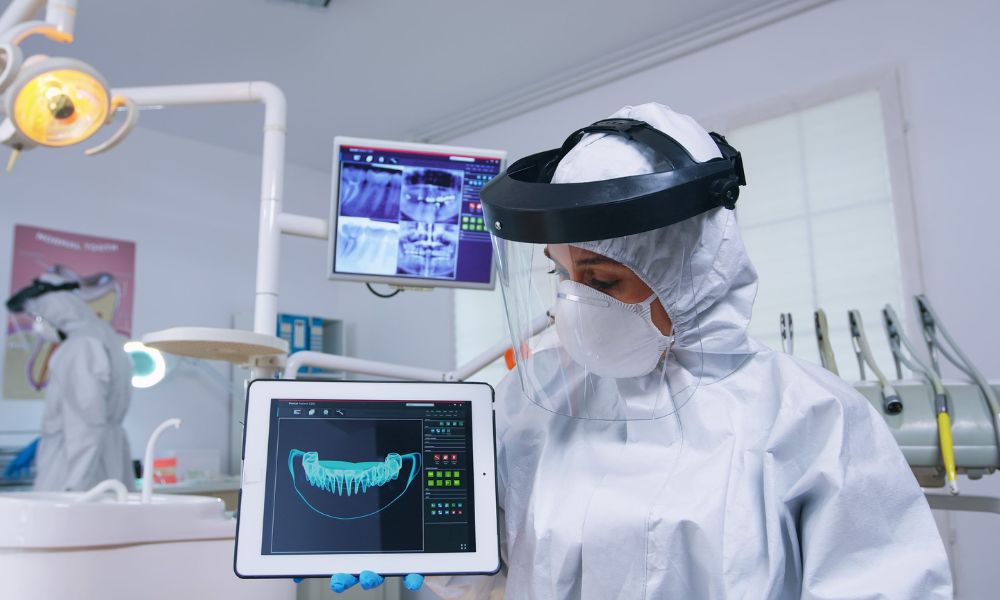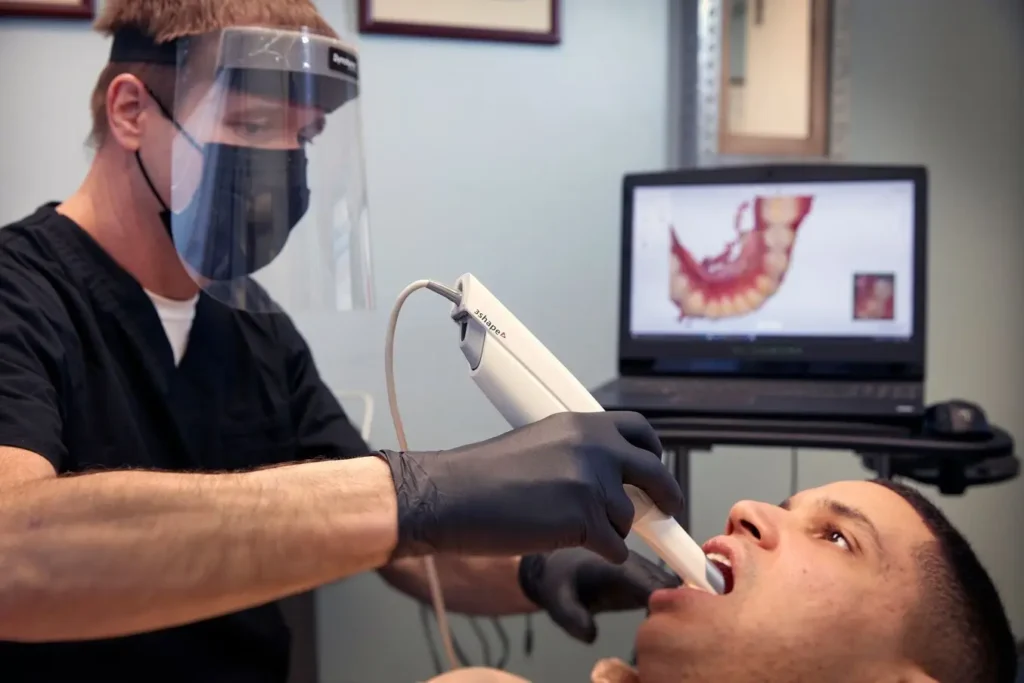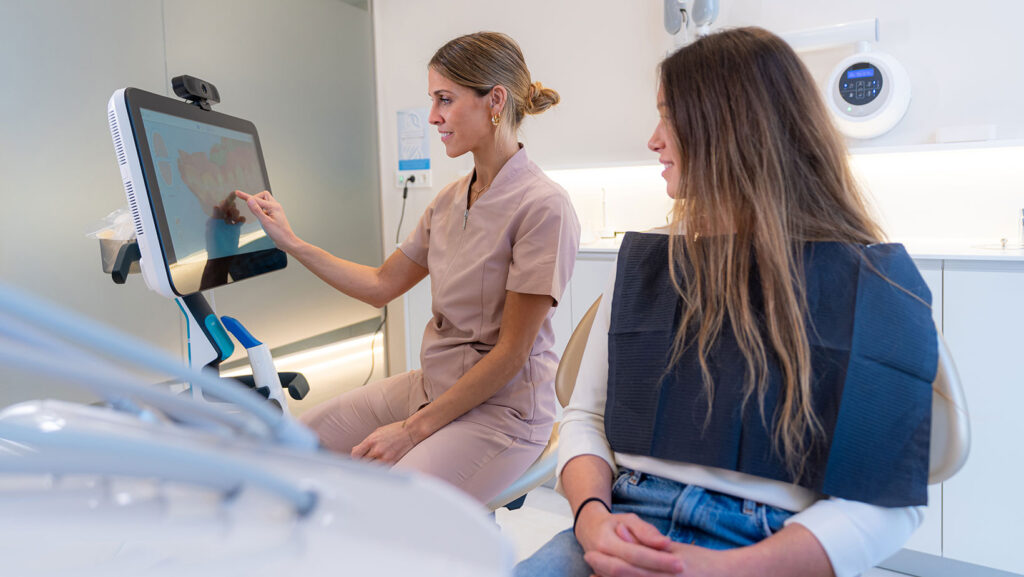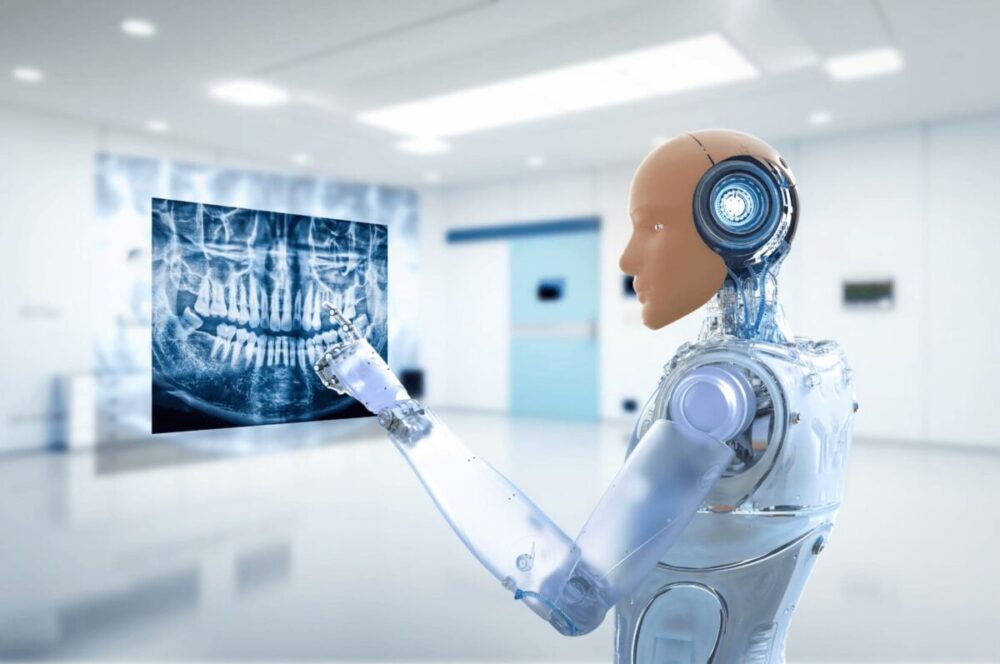In modern dentistry, precision is everything. Small details in X-rays, patterns in digital scans, or subtle patient data variations can make the difference between early intervention and missed pathology.
Clinical AI has become an indispensable partner in this process, helping dentists identify, interpret, and act on findings with greater speed and certainty.
This article explains how artificial intelligence is transforming diagnostic accuracy, from everyday chairside work to complex treatment planning.
The New Reality of Clinical Diagnostics
Dentists today face a growing volume of imaging and data, from intraoral scans to cone-beam computed tomography (CBCT). Manually interpreting every data point is time-consuming and prone to fatigue. Clinical AI tools change that dynamic by acting as intelligent co-pilots.
They analyze data in real time, highlight potential areas of concern, and provide visual overlays that help clinicians confirm findings. Instead of replacing professional judgment, AI enhances it. The outcome is faster, more confident diagnoses, especially for conditions like caries, bone density loss, or periapical lesions that might otherwise go unnoticed.
How AI Builds Trust and Clinical Confidence
AI-driven diagnostic systems rely on deep learning models trained on thousands of validated dental cases. These models continuously learn from new input, refining their ability to detect patterns that align with human clinical reasoning.
Solutions like Trust AI exemplify this approach by combining image analysis with contextual understanding. They evaluate not just radiographs but patient-specific data such as age, medical history, and periodontal trends. For the practitioner, this means each recommendation comes with a rationale and confidence level, making it easier to trust and verify.
Key Benefits in Practice:
- Early and consistent detection of dental caries and structural anomalies
- Clear visual guidance on radiographs and 3D scans
- Data-backed recommendations that align with clinical intuition
When technology reinforces what the clinician already suspects or occasionally reveals what the eye might miss it builds both accuracy and confidence.

Source: elitedentalhyderabad.com
Data-Driven Insights Improve Predictive Care
AI doesn’t just diagnose; it predicts. By studying large datasets, machine learning algorithms can identify patients who are more likely to develop specific oral health issues. For instance, predictive analytics can flag early signs of bone resorption or indicate elevated caries risk based on previous digital impressions.
|
Predictive Parameter |
AI Insight |
Clinical Impact |
| Caries progression patterns | Identifies enamel demineralization trends | Enables preventive fluoride treatment |
| Bone density variation | Detects changes in CBCT images | Aids implant planning and risk mitigation |
| Periodontal pocket depth over time | Analyzes patient history data | Supports proactive maintenance schedules |
Such predictive capabilities enable dentists to design prevention-focused care plans, improving long-term outcomes and reducing costly interventions.
Did You Know?AI algorithms in dental imaging have reached over 90% accuracy in caries detection, according to multiple peer-reviewed studies. This level of precision rivals or even exceeds human detection rates, especially in early lesions that are difficult to see on standard 2D X-rays.
Streamlining Radiographic Interpretation
One of the most time-intensive tasks in dentistry is reviewing radiographs. Clinical AI systems dramatically shorten this process. They automatically mark suspect regions, classify pathology types, and generate structured reports that integrate with electronic health records.
For busy practices, this means reduced chairside time per patient and improved consistency between providers. It also minimizes the subjectivity that can arise between different clinicians interpreting the same image.
AI does not diagnose independently, it provides analytical support. The final judgment always remains in the hands of the dentist, ensuring that human experience and empathy stay at the center of patient care.
Enhancing Collaboration Between Humans and Machines
The success of AI in clinical diagnostics lies in how well it fits into existing workflows. Modern systems integrate seamlessly with practice management software, intraoral cameras, and digital imaging tools. Dentists can review AI insights directly on their familiar interfaces without additional steps.
This collaboration boosts efficiency and enhances peer communication. For instance, when AI-generated annotations are shared across a multidisciplinary team—orthodontists, prosthodontists, or endodontists—they all work from the same data-driven foundation.
Core Advantages:
- Seamless integration into daily operations
- Collaborative interpretation among dental specialists
- Reduction in diagnostic discrepancies

Source: dental.formlabs.com
Patient Communication and Transparency
Patients are increasingly informed and expect clear explanations about their treatment plans. AI-powered visuals, such as heatmaps highlighting decay or bone loss, serve as effective educational tools. When patients see tangible, color-coded evidence, they understand and trust the dentist’s recommendations more easily.
Moreover, AI enhances documentation, which helps in insurance approvals and medico-legal clarity. Visual evidence backed by algorithmic analysis creates a transparent narrative for both the patient and the provider.
Reducing Diagnostic Bias and Human Error
Even the most experienced clinicians can experience fatigue, cognitive bias, or overlook subtle anomalies. AI systems never tire, and their objectivity serves as a safeguard against these limitations. They consistently review each image or dataset using uniform parameters, ensuring that no critical detail is ignored.
Over time, this standardization across patient cases not only improves diagnostic quality but also enhances training. New dentists can use AI-assisted platforms to validate their findings and refine their diagnostic eye.
Continuous Learning and Adaptive Intelligence
AI thrives on feedback loops. The more it interacts with real clinical cases, the more accurate it becomes. Leading solutions automatically adapt to local population data, reflecting region-specific dental health trends or imaging variations.
In the long term, this self-improvement mechanism creates AI tools that align more closely with the realities of each dental practice. Instead of static systems, clinics gain evolving diagnostic assistants that mirror their patient demographics and case complexities.
The Ethical and Regulatory Dimension
As clinical AI becomes more prevalent, ensuring transparency and accountability is essential. Dental professionals must understand how algorithms reach conclusions, which datasets were used for training, and whether patient data is securely stored. Ethical frameworks and compliance with medical device regulations play a critical role in responsible adoption.
When implemented correctly, AI becomes not only a technical upgrade but a reflection of professional integrity, enhancing diagnostic excellence while maintaining patient privacy.

Source: dentalhealthsociety.com
The Future of Diagnostic Dentistry
The trajectory of AI in dentistry is moving rapidly toward personalized and real-time diagnostics. Soon, chairside AI may combine visual analysis with genetic and microbiome data to assess oral health at a molecular level. What started as assistance in reading X-rays is evolving into an integrated intelligence system guiding every stage of care.
In summary:
- AI sharpens precision in radiographic interpretation
- Predictive analytics improve preventive care
- Patient trust grows through visual transparency
- Continuous learning ensures evolving reliability
Clinical AI is all about amplifying human expertise, not replacing it. Dentists who embrace this collaboration gain not just efficiency but deeper confidence in every diagnosis they make.

















